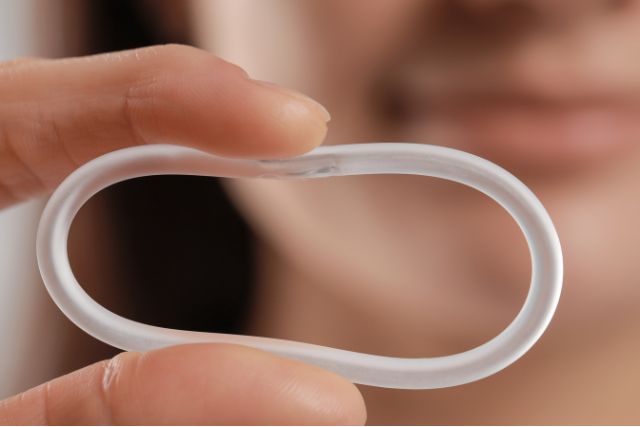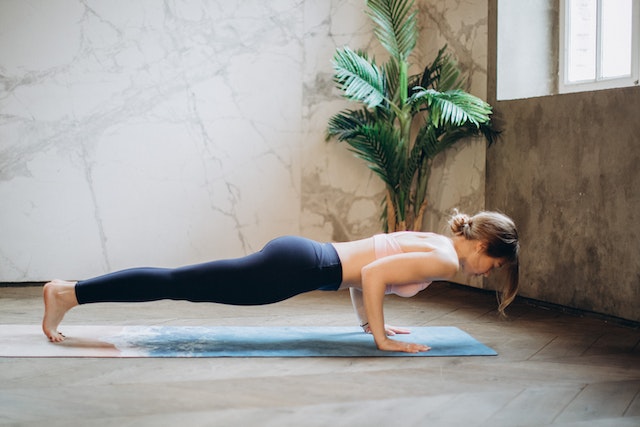How To Strengthen Vaginal Muscles After Childbirth With Easy-To-Do Pelvic Floor Exercises
Pregnancy and Childbirth are a whole new chapter in a woman’s body. You may notice after delivery that doing simple things like sneezing or having a hearty laugh may cause a little leakage in urine.
Sometimes this leaking of urine is worrisome, especially if it’s frequent and requires a change of underwear.
If this has happened to you, do not be embarrassed, mama; you’re not alone.
Many women face similar problems in the first six weeks after delivery.
They tend to suffer in silence as they blankly stare at the calendar, expecting the passing days to bring healing.
But does time really bring on the expected healing?
Definitely Yes.
However, you must also play your part to speed up the healing process.
This post looks at how you can Strengthen your vaginal muscles after childbirth with pelvic floor exercises.
But before then, let’s have an overview of how childbirth affects your vagina.
How does childbirth affect the vagina?
If you have a vaginal delivery, it will probably leave you feeling more open and wider.
You may also suffer postnatal bleeding, vaginal dryness, and urinal incontinence.
These childbirth-related issues are more prominent if you gave birth to a big baby weighing over 3.5kg or had prolonged labor that affected your bladder.
It happened to me when I gave birth to my last born, weighing 4kgs, and I truly understand how your body may feel afterward.
Additionally, if you have an episiotomy or perianal cut, the stitches may take time to heal or increase the risk of feeling pain during sex.
While most of these symptoms may heal in the first six weeks after childbirth—some, especially vaginal dryness, may have to wait until your hormone returns to balance.
That is why incorporating specific foods into your diet and performing pelvic flow exercises may help you feel better.
But you may wonder,
What is the relationship between the vagina and pelvic flow muscles?
The pelvic floor is a set of soft tissues and muscles attached to the bones located at the bottom of the pelvis.
Their primary function is to support pelvic organs like the urethra, bladder, intestines, prostate, rectum, uterus, cervix, and vagina.
They also affect sexual health, like being aroused or having an orgasm during intercourse.
Pelvic floor muscles and tissues play crucial roles in every human.
Think of walking, hip support, or urine and stool control. All these body functions depend on these muscles to function effectively.
Related: 13 Natural Remedies for Vaginal Dryness During Pregnancy and After Childbirth
What is pelvic floor muscle disorder?
Pelvic floor disorder occurs when the muscles can no longer play their role effectively.
The muscles may be too loose (underactive/laxity) or too tight (over activity/spasm).
If the muscles are weak or loose, they cannot fully support the pelvic organs. If that happens, one can experience an increase in the frequency of urination, urine leakage, and fecal leakages.
If the muscles are too tight, you may experience constipation, intense urgency to urinate, or even pain during intercourse.
One study suggests that a weak or dysfunctional pelvic floor can lead to fecal incontinence, urinary incontinence, and pelvic organ prolapse.
The symptoms may vary depending on the degree of dysfunction, including leakage in urine, inability to hold poop, and pain during sex.
But is it possible to know whether you have a pelvic floor disorder?
Yes. Here are a few symptoms.
What are the signs of pelvic floor disorder?
- pelvic pressure or a feeling of fullness in the pelvic
- the urge to urinate frequently
- pain in your bladder when urinating
- urinary leakage
- Lower back pain
- constipation or bowel leakage
- difficulty emptying the bladder
- pain with sexual intercourse
What factors contribute to pelvic floor dysfunction?
Although pregnancy, labor, and delivery may significantly disrupt the normal function of the pelvic floor muscles, other factors can also contribute to pelvic floor disorders.
According to research, factors like sexual abuse, age, and surgery can also cause pelvic floor disorder.
Likewise, health practitioners warn that repeated heavy lifting, which involves applying lots of pressure on the abdomen or prolonged sitting, can also affect the pelvic floor muscles.
Pelvic Floor Muscles and Sex Life
How do pelvic floor muscles affect your sex life?
Since pelvic floor muscles support sexual organs like the vagina, their ability to function effectively affects your sex life.
Overactive or tight pelvic floor muscles can lead to pain during intercourse.
While if your muscles are weak, you may not feel sexual excitement; better still, your partner may be frustrated.
According to research, a strong pelvic floor may translate to better sexual scores in women. Healthy pelvic floor muscles may mean increased sensitivity during sex and stronger orgasms.
Similarly, training the pelvic muscles can help with men’s sexual life by reducing the symptoms of erectile dysfunction.
Sex After Childbirth: Here is Mommy Friendly Tips for Safer Sex After Childbirth
The following exercises have been shown to enhance pelvic floor muscles’ functioning for improved quality of life in women.
Best Exercises to Tighten Vaginal Muscles (Hypotonic/too weak or lax)
Like bones or other body muscles, the pelvic floor operates better if it feels firm and can strengthen and contract maximum.
According to the Journal of Women’s Health, improving the pelvic floor’s functionality can improve women’s quality of life. That is why all-time mommy gives you this ease to do home exercises to strengthen hypotonic pelvic floor muscles.
1. Kegel Exercises to Tighten Vaginal Muscles
Kegel exercise entails repeatedly contracting and relaxing the pelvic floor muscles. By holding and releasing these muscles several times, they get strengthened to perform their duties maximum.
How to Do Kegel Exercises
The beauty of the Kegel exercise is that you can perform it at any time. In the beginning, you may try doing the exercise while lying down until you can feel the muscles.
As you progress, it becomes easier to exercise when standing, walking, sneezing, or even laughing. It’s vital that you try out different scenarios to improve urinary incontinence.
Here’s how to locate your muscles
- Imagine you’re pressed but want to hold the urine without squashing your legs or buttocks. Your pelvic floor is the muscles you squeeze to prevent urine leaks. Alternatively, you can locate your pelvic flow muscles by stopping mid-way while peeing. The muscles you involve to stop the flow of urine midway- are what are called pelvic floor muscles. Get to understand how they feel during contraction or relaxation.
- After locating your pelvic flow, you may start holding and releasing the muscles by lifting your genitals and slowly relaxing them.
- You may do these 5 seconds at least 3 times every day.
- Try to increase the time you hold and rest your pelvic floor muscles. Start with a few seconds, and then you can slowly increase your holding in and resting time after a few weeks.
2. Mini or Partial Squats to Tighten Vaginal Muscles
Mini, partial or shallow squats are among the recommended mild postpartum exercise.
Regularly performing this exercise, whether holding your baby or not, has been found to help your back and strengthen your pelvic floor muscles.
One study that sought to establish the effectiveness of squatting when combined with other exercises in combating daytime urine leakage and bed wetting at night in kids concluded that; 86 % of participants were cured after 4 weeks.
The researchers also noted other secondary outcomes like a cure for constipation, fecal incontinence, and urinary retention.
Mini squats are an excellent way of shortening and activating the pelvic muscles. When doing mini squats, ensure you lift and hold your genitals for a long period.
How to perform partial or mini squats:
- Get a comfortable place like an exercise mat. firmly stand with your legs wide apart
- With your hands held together and close to the chest, gently lower your hips and buttocks at about 90 degrees and hold.
- With your back straight, Ensure that Your knee and feet are in alignment.
- You may perform this exercise while holding your baby or incorporate the use of resistance bands.
3. Clamshell Exercise to Tighten Vaginal Muscles
Clamshell exercise is known in the sports world for hip strengthening and prevention of injuries.
Its often used by physical therapists for strengthening the hips, glutes, and pelvis.
Silly as it may look, this exercise has been found to have the same effect on your pelvic floor muscles as kegel exercise.
According to therapists, clamshell helps to create a desirable muscular balance between the core muscles. That is, your inner thighs, outer thighs, and pelvic floor.
This exercise helps to strengthen the gluteus medius, the muscles responsible for supporting and stabilizing the pelvis.
What you need: A yoga mat or a firm, comfortable surface.
Muscles worked: hip, gluteus medius, to support pelvic floor muscles.
How to do clamshell exercise;
- Lie on your side, with your arm folded under your head like a pillow.
- Stack your legs together from your hips to your feet.
- Bend your stacked legs forward so that the hips are flexed forward at 45 degrees angle.
- Ensure that your head, pelvis, and feet are in alignment.
- As you lift your upper knee as high as possible, ensure you engage your abdominals by pulling in your belly button. This will help to stabilize your spine and pelvis. Also, the leg on the floor should remain intact and not move off the floor.
- Try repeating this movement atleast10 times on each side.
- You may also use resistance bands above your knees or dumbbell rotation to enhance the effectiveness of this exercise.
4. Pelvic Bridge to Tighten Vaginal Muscles
The Bridge is an exercise that targets a group of muscles supporting pelvic organs.
You build and strengthen the core and buttocks muscles by doing bridge exercises. These muscles, in turn, support and strengthen your pelvic floor for maximum performance.
To practice bridge,
- Lie down on your back
- With your feet remaining flat on the floor, bend your knees at a 90-degree angle.
- Place your arms on the sides in such a way that the palms face downward.
- Pushing through with your heels, raise your hips off the ground. Ensure you squeeze your glutes, pelvic floor, and hamstrings.
- Start by Pausing in this position for about 5 seconds before relaxing your muscles and returning to the first position.
Exercises to Relieve Hypertonic Pelvic Floor Muscles (tight muscles)
Instead of weak pelvic muscles, some women tend to experience tight or hypertonic pelvic flow muscles.
Your muscles may become tense if you habitually hold urine or stool for a long time.
Likewise, abnormalities in the nerves and injury during surgery or childbirth may contribute to the tense pelvic flow.
You will experience difficulty starting your urination stream, a feeling of peeing again right after you’re done, constipation, pain during penetration, pain when inserting a tampon, and urine spraying all over when peeing.
How can you correct this?
Here is the way.
Best Exercises for Hypertonic Pelvic Floor Muscles
A hypertonic exercise enhances pelvic floor muscles’ relaxation. It lengthens a short or tight pelvic floor for proper functioning. Here are pelvic girdle stretches to help relax tight Pelvic Floor muscles.
1. Happy Baby Pose to Relax Vaginal Muscles
Have you ever seen a baby happy? They lay on their back, with their legs wide spread and probably holding their toes. And that is literally what this exercise entails.
As simple as this exercise may seem, regularly performing it may help reduce hip tension and release tight pelvic floor muscles.
Here is how to perform it.
- Get a soft mat and Lie down on your back.
- Raise your legs and bend your knees towards your tummy. Your knees should remain wider than your chest.
- Try bringing your feet towards your armpits.
- Reach out and hold the sole of your feet.
- Stay in that position for a few seconds, rocking on your back from side to side
2. Deep Squats To Relax Vaginal Muscles
Whereas partial or shallow squats are known to tighten the weak muscles, performing widened deep squats is also a type of stretch that enhances relaxation and release of hypertonic pelvic floor muscles.
Regular deep squats can lengthen the core muscles and separate the seating borne, thus releasing tension on the pelvic floor.
To perform a deep squat, one should:
- Stand with your feet wide apart.
- Bend your knees to lower your buttocks while keeping your back straight and slightly tilted forward.
- With your hips below the knee, try to go as low as possible until you reach the lowest point of the movement pattern.
- Stay in this position for a few seconds while Focusing on stretching the pelvic floor muscles.
- You may Repeat this movement about 10 times per session.
3. Diaphragmatic Breathing to Relax Vaginal Muscles
Diaphragmatic breathing is a deep breathing exercise that can voluntarily enhance relaxation in your body. The activity, mainly done to relieve stress, has also been found to significantly relax tight pelvic floor muscles.
Since the diaphragm and the pelvic floor have a pressure relationship, contracting or relaxing your diaphragm in controlled breathing results in subsequent contraction and relaxation in your pelvic floor.
Practicing diaphragmatic breathing that involves deep inhaling through your nose, holding your breath for a few seconds, and slowly exhaling can help relax the lower abdominal wall. This, in turn, will relieve tension in your pelvic floor muscles.
To perform this exercise;
- Get a quiet space and yoga mat in place
- You can choose to sit or lay on your back while exercising
- Begin with a few sessions of progressive relation to ease tension in your body
- With one hand on your tummy and the other on your chest, slowly inhale through your nose and hold. You should feel as though your stomach has expanded, but your chest stays relaxed.
- Exhale slowly after a few seconds of holding
Do pelvic floor exercises make you tighter?
Definitely yes. Studies have shown that regularly performing pelvic floor exercises to correct weak muscles like kegel can significantly tighten your vagina and correct fecal and urinal incontinence.
Based on this research, Many healthcare providers advise pregnant women to perform kegel exercises before and after childbirth to strengthen their pelvic floor muscles.
How can you strengthen your pelvic floor without Kegels?
While kegel is the most known pelvic floor exercise, it isn’t entirely the only one. Engaging in yoga poses like happy baby pose, partial squats, clamshell, and child’s pose is equally effective in strengthening your core muscles.
How long can it take to strengthen your pelvic floor muscles?
1 to 3 months. Most women begin to notice some improvement in their pelvic floor muscles between 1 to 3 months of regular exercise. Sometimes it may take a longer time, depending on the severity of the issue.
Take Away
Here are real-life stories of how performing pelvic floor exercises has helped all-time-mommy -Mamas reclaim their normal lifestyles after childbirth.
Julia Mayo says,
“After giving birth to my firstborn, I felt like my body had changed completely. My baby pouch didn’t go back for some months, and I had issues with leaking urine. One day, when taking my daughter to the wellness clinic, I had the privilege of talking to a gyno who recommended kegel exercise and yoga for relaxation. At first, I was reluctant, but my hubby urged me to try it since it was advice from a specialist. Eight weeks down the line since I started these exercises, I can say that I feel so different. I have been doing at least 10 partial squats and kegel for about 8 weeks. The urine leakage has drastically reduced, and I’m a happy mother.”
Irene says,
“After the birth of my thirdborn, I felt so open and wide because of his weight. My son was born weighing 4kgs and had several stitches due to a perianal tear. Doing Kegels have really been of help to me. I started doing this exercise within the first week of delivery and have been doing it religiously. It’s over a year now, and feeling so well.”
Dr. Lucy Otieno says,
“Kegel exercise is a must for women during pregnancy and after delivery. Besides strengthening your pelvic muscles for great urine and fecal control, this exercise has also proved effective in helping new moms go back to enjoying their bedroom life and intimacy after childbirth.”
12 Things I Wish I Knew Before Going Into Labor and Childbirth







